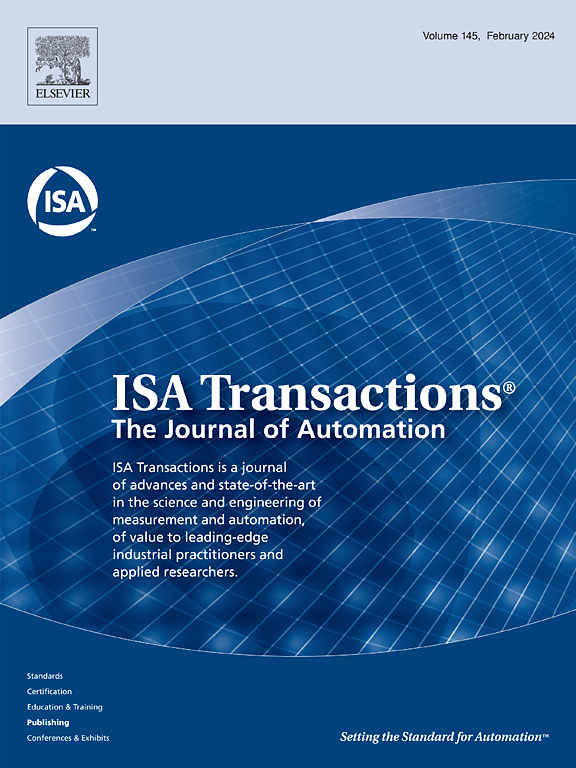Reference composite features database construction method based on track segmentation for gravity matching aided navigation
IF 6.3
2区 计算机科学
Q1 AUTOMATION & CONTROL SYSTEMS
引用次数: 0
Abstract
The reference database or maps is the most important foundation of the gravity matching aided navigation system, which can directly affect the navigation performance of the system and determine the level of matching positioning accuracy. The matching algorithm is usually designed according to the form of database, and its principle is closely related to the structure of database. In this paper, a reference composite features database construction method based on track segmentation (TS-RFD) is proposed. The TS-RFD method mainly can extract texture features from gravity reference data, and determines 8 kinds of features such as index feature and matching feature to establish a reference composite features database. Combined with the search structure of key-value pairs, index feature is used as keys and matching features as values to propose the track segmentation search strategy for matching, and the final positioning result is obtained. Compared to the traditional numerical gravity reference databases or maps which briefly constructed from just gravity anomaly values, with the proposed TS-RFD method various matching features derived from gravity distribution and change are composited to construct a reference composite features database. When the new TS-RFD based database is loaded for gravity matching aided navigation system instead of traditional numerical database, it can significantly enhance efficiency and accuracy, and maintains robust stability. Six subregions in the South China Sea with different gravity distribution and changes were chosen for simulation experiments to verify the performance of proposed database construction. In these six subregions, matching positioning tests along 4200 simulated tracks were carried out. Simulation results show that, with gravity features database constructed from TS-RFD method, both matching accuracy and stability of gravity matching navigation are distinctly improved that obviously superior to the gravity matching with traditional pure numerical database. Moreover, the gravity matching navigation tests were conducted utilizing real measured gravity data in the South China Sea. Measured data test results indicate that after 150 times matching positioning along the track, the average positioning accuracies of matching navigation experiment with traditional numerical database are more than 1.45 nautical miles. In contrast, the average positioning accuracy with TS-RFD database can achieve 1.19 nautical miles, the stability and success rate are still significant advantages.
基于航迹分割的重力匹配辅助导航参考复合特征数据库构建方法。
参考数据库或地图是重力匹配辅助导航系统最重要的基础,它直接影响系统的导航性能,决定匹配定位精度的高低。匹配算法通常是根据数据库的形式来设计的,其原理与数据库的结构密切相关。提出了一种基于航迹分割(TS-RFD)的参考综合特征数据库构建方法。TS-RFD方法主要从重力参考数据中提取纹理特征,确定索引特征和匹配特征等8种特征,建立参考复合特征数据库。结合键值对的搜索结构,以索引特征为键,以匹配特征为值,提出轨迹分割搜索策略进行匹配,得到最终定位结果。与传统数值重力参考数据库或仅由重力异常值简单构建的重力地图相比,本文提出的TS-RFD方法将重力分布和变化得到的各种匹配特征组合在一起,构建参考复合特征数据库。将基于TS-RFD的新数据库加载到重力匹配辅助导航系统中,可以显著提高效率和精度,并保持鲁棒稳定性。选取南海6个不同重力分布和变化的子区域进行模拟实验,验证所建数据库的性能。在这6个分区中,沿4200条模拟轨道进行了匹配定位试验。仿真结果表明,利用TS-RFD方法构建重力特征数据库,重力匹配导航的匹配精度和稳定性都有明显提高,明显优于传统纯数值数据库的重力匹配。利用南海实测重力数据进行了重力匹配导航试验。实测数据测试结果表明,经150次沿航迹匹配定位后,传统数值数据库匹配导航实验的平均定位精度在1.45海里以上。相比之下,TS-RFD数据库的平均定位精度可达到1.19海里,稳定性和成功率仍有显著优势。
本文章由计算机程序翻译,如有差异,请以英文原文为准。
求助全文
约1分钟内获得全文
求助全文
来源期刊

ISA transactions
工程技术-工程:综合
CiteScore
11.70
自引率
12.30%
发文量
824
审稿时长
4.4 months
期刊介绍:
ISA Transactions serves as a platform for showcasing advancements in measurement and automation, catering to both industrial practitioners and applied researchers. It covers a wide array of topics within measurement, including sensors, signal processing, data analysis, and fault detection, supported by techniques such as artificial intelligence and communication systems. Automation topics encompass control strategies, modelling, system reliability, and maintenance, alongside optimization and human-machine interaction. The journal targets research and development professionals in control systems, process instrumentation, and automation from academia and industry.
 求助内容:
求助内容: 应助结果提醒方式:
应助结果提醒方式:


